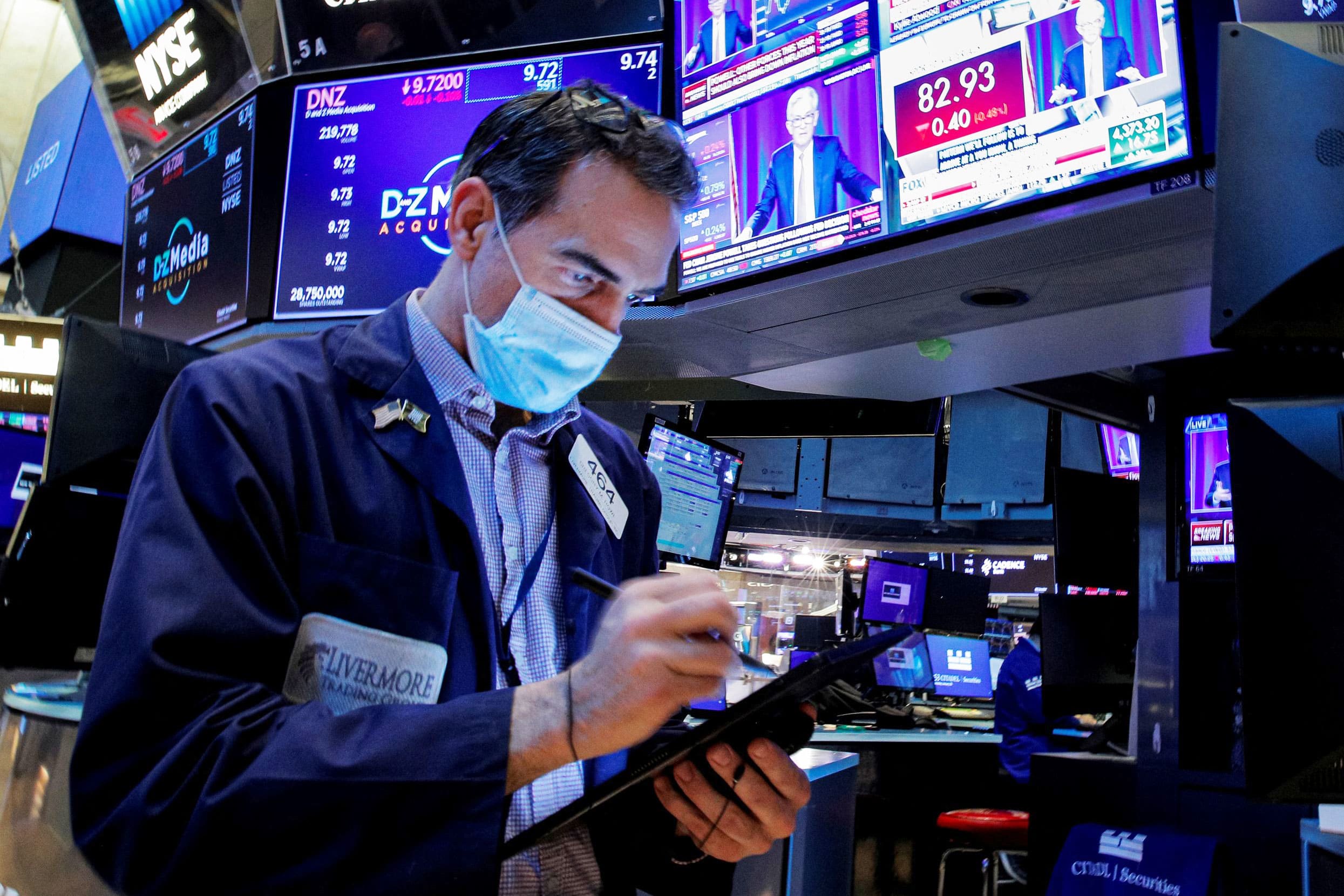Treasury prices gain, yields fall in flight to safety on Russia-Ukraine fears

U.S. Treasury yields fell and prices gained in volatile trading Friday as investors flocked to safe-haven assets amid the escalated geopolitical tensions between Russia and Ukraine.
The yield on the benchmark 10-year Treasury note fell 8 basis points to 1.94%. Earlier in the day, the benchmark 10-year rate was holding above the 2% level following the hottest inflation reading in four decades.
The 2-year yield, which saw its biggest one-day move since 2009 on Thursday, dropped 4 basis points to 1.50%. The yield on the 30-year Treasury bond, meanwhile, fell 2 basis points to trade at 2.28%. Yields move inverse to prices and a basis point equals 0.01%.
The move lower came after U.S. National Security Advisor Jake Sullivan said at a White House briefing that there were signs of Russia escalation at the Ukraine border and that it was possible that an invasion could take place during the Olympics, despite speculation to the contrary.
Sullivan noted that the U.S. is not certain that Russian President Vladimir Putin has made a final decision to invade Ukraine. But “it may well happen soon,” he said. Stocks came off their lows and oil and bond prices retreated from their highs of the trading session following that comment from Sullivan, which countered a bit an earlier report that had sent markets reeling.
Earlier in the afternoon, news broke that the U.K. told British nationals to leave Urkaine immediately. A Downing Street spokesperson also said Prime Minister Boris Johnson feared for the “security of Europe in the current circumstances.”
The spokesperson added that Russian President Vladimir Putin “had to understand that there would be severe penalties that would be extremely damaging to Russia’s economy, and that Allies needed to continue with efforts to reinforce and support the Eastern frontiers of NATO.”
In the previous session, the 10-year rate climbed above 2% for the first time since August 2019
The yield on the 2-year Treasury bond, the most sensitive duration to interest rates, was last seen trading at 1.61%. The 2-year surged 26 basis points at one point on Thursday, marking its biggest single-day move since 2009.
This comes after the Bureau of Labor Statistics reported on Thursday that the consumer price index had risen 7.5% in January from a year earlier, the fastest pace of U.S. inflation since February 1982.
“When the cliche ‘behind the curve’ is used to describe the current stance of the Federal Reserve, they are not even in the same state as the stadium in which the curve is being thrown at them,” Peter Boockvar of Bleakley Advisory Group, a long-time critic of the Fed’s approach to inflation, said in a note to clients.
The hotter-than-expected inflation reading prompted St. Louis Fed President James Bullard to call for accelerating rate hikes — a full percentage point increase by the start of July. However, other Fed officials have pushed back against the idea of a 50-basis point hike following the CPI report, according to reporting by CNBC’s Steve Liesman.
The futures market also repriced rate-hike odds as CME data pointed to a near-100% chance of a 50-basis-point increase at the March meeting, but that had retreated to about a 66% chance on Friday morning.
Jeffrey Gundlach, CEO of DoubleLine Capital, said on “Halftime Report ” that he didn’t think the bond market had moved enough for the Fed to feel comfortable making a 50-point basis hike in March but that he expected the central bank to hike rates higher than expected over the course of the the rate-hiking cycle.
“My suspicion is they’re going to keep raising rates until something breaks, which is always the case,” Gundlach said.
Elsewhere, the University of Michigan’s preliminary consumer sentiment reading for February came in at 61.7, falling from 67.2 the previous month and missing expectations.
— CNBC’s Yun Li and Kevin Breuninger contributed to this report.




